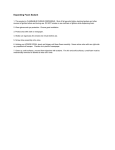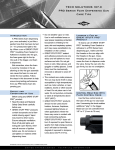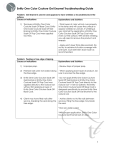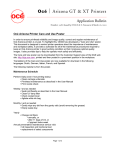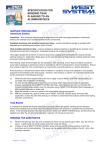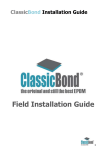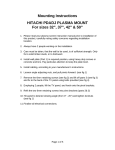Transcript
Loctite TITE FOAM Insulating Foam Sealant Installation Guide 1. This product is extremely flammable. Do not use near sparks, heat or open flame. Vapors will accumulate readily and may ignite explosively. Do not smoke or use matches/lighters while dispensing foam. Area should be well‐ventilated. 2. Always wear eye protection, gloves and proper work clothes when using Loctite TITE FOAM. Cured foam is difficult to remove from skin and clothing and may discolor skin. 3. Ensure all surfaces are clean and free from dirt, dust, oil and other contaminants likely to impair adhesion. Surfaces can be moist but not frosted or iced. Cover surfaces not intended to be foamed. 4. For porous, mineral substrates (ie. brickwork, concrete), slightly dampen surfaces with water spray before application. 5. Temperature of the working area should be between 23°F (‐5°C) and 95°F (35°C). Temperature of the product should be between 41°F (5°C) and 86°F (30°C). When working in cold conditions, can should be stored at room temperature for at least 12 hours before use. 6. Shake can vigorously for at least 30 seconds before use. 7. Screw straw into valve. 8. Holding can upside down, press the trigger which controls the outflow rate of foam. Dispense sparingly, filling the joint initially by half to avoid excessive overflow. Shake can regularly during use. 9. Slight misting with water can speed cure. Foam can be trimmed with a knife after an hour and will be fully cured in approximately 24 hours. 9. Clean tools and uncured foam residue using acetone. Cured foam must be removed mechanically. Other useful tips: It is recommended foam be protected from UV radiation by a protective covering or coating such as paint, plaster, mortar, etc. Ambient temperature and humidity can affect foam curing and maximal joint width. In dry conditions, to get the best foam structure and properties, it is recommended to fill gaps and joints in several layers by the application of smaller foam strings (up to 2 inches thickness). At very dry conditions, the foam may be brittle after hardening. This brittleness is a temporary effect.
